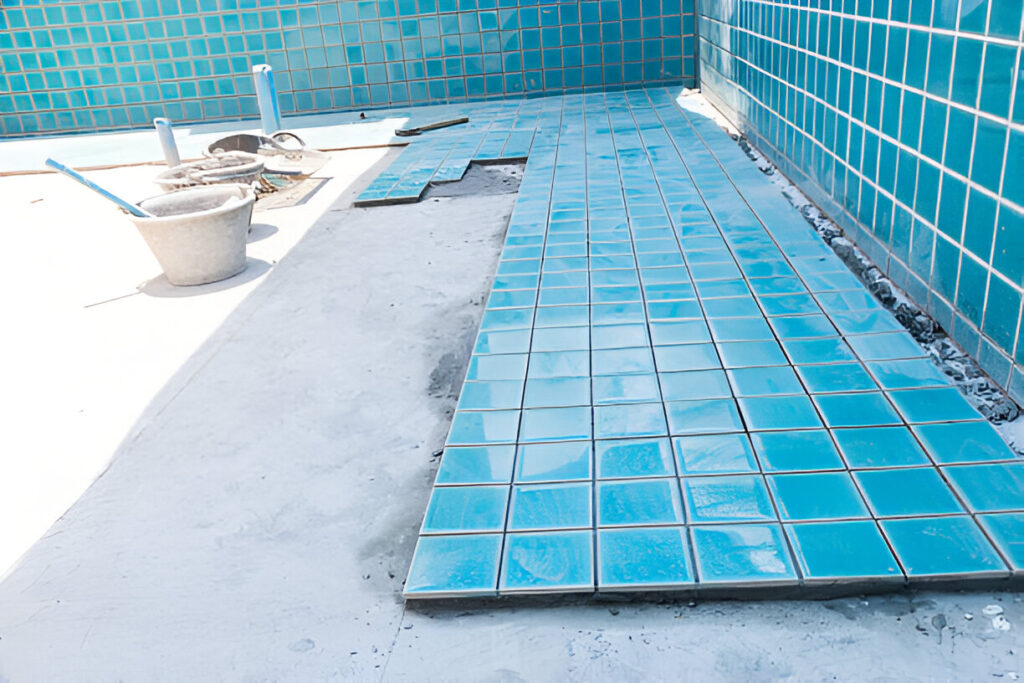Installing a pool in your backyard is an exciting endeavor, but as you dive into the process, it’s easy to get swept up in the excitement of envisioning your personal oasis. However, before breaking ground, it’s important to know that there are several hidden costs of pool installation that might surprise you. While it’s tempting to focus on the obvious expenses like the pool itself and labor costs, there are many factors that can add up, potentially stretching your budget more than expected. This article will explore some of the often-overlooked pool pricing and expenses you should be aware of before starting your pool project.
Permitting and Legal Fees
Before any work can begin, you’ll need to navigate local regulations. Pool installation often requires various permits, and the cost for these can vary widely depending on where you live. These fees are typically for safety inspections, zoning compliance, and any environmental concerns. While some homeowners might assume these fees are minimal, they can add up, particularly if your municipality has strict regulations. It’s crucial to factor in the cost of obtaining these permits, which can range from a few hundred to a few thousand dollars, depending on the scope of the project.
Site Preparation
Your backyard might not be ready for a pool installation as it stands. Depending on the layout and terrain, significant site preparation could be required. If your yard has trees, rocks, or uneven ground, these obstacles will need to be removed before installation can proceed. The process of clearing land, grading, or leveling the area often comes with additional costs that many homeowners don’t initially account for. Excavation and soil removal can be particularly expensive, especially in areas where the land is more difficult to work with. These additional tasks might increase the overall price by a considerable amount.
Landscaping Adjustments
After your pool is installed, your backyard will likely need some landscaping adjustments to make it both functional and visually appealing. This can include laying down new grass, building retaining walls, installing fences for safety, or adding decorative features such as lighting and planters. These landscaping upgrades are essential for both aesthetics and safety but can significantly increase your overall expenses. If you plan on adding hardscaping elements like patios or decking around the pool, these additions can raise the cost even further.
Pool Equipment and Maintenance
A pool isn’t just a hole filled with water; it comes with a variety of essential equipment that you’ll need to maintain its functionality and cleanliness. Pumps, filters, heaters, and pool covers are just the basics, but there are also additional tools for cleaning and maintaining water quality, such as skimmers, vacuums, and chemical testers. While these might seem like one-time purchases, many of these items require regular replacement and maintenance, which can add up over time. You might also need to invest in pool covers to protect the water during off-seasons or harsh weather, which can be another unexpected cost.
Utility Bills
While you might have considered the initial cost of filling your pool with water, many homeowners overlook the impact pool ownership can have on their ongoing utility bills. A pool will increase your water usage, and if you’re in a hot climate, your electricity bill may rise due to the need for running pumps and heaters. Over time, these costs can be significant, especially during the warmer months when the pool is used most often. Be sure to factor in the potential for higher monthly utility bills when budgeting for your new pool.
Insurance Premiums
It’s easy to forget that owning a pool may affect your homeowner’s insurance premiums. Insurance companies often raise premiums for homes with pools due to the increased risk of accidents or injuries. These costs can range from a few hundred to a thousand dollars a year, depending on the specifics of your policy and the type of pool you have. Some insurers may also require you to install additional safety features, like pool fences or alarm systems, which can further add to your overall costs.
Pool Repairs and Unexpected Issues
Even with proper maintenance, pools can encounter problems over time. Whether it’s a leak, a malfunctioning pump, or cracks in the structure, pool repairs can be costly. These unexpected issues can arise at any time and may require professional attention to prevent larger, more expensive problems down the line. For instance, repairing a crack in the pool shell or replacing a broken pump might cost you several hundred or even thousands of dollars, depending on the severity of the problem. It’s wise to have an emergency repair fund set aside to cover these potential costs.
Budgeting for the Unexpected
While installing a pool is a fantastic way to enhance your home and create a fun, relaxing environment, it’s essential to be aware of the hidden costs that can creep up during and after installation. By budgeting for permits, site preparation, landscaping, and ongoing maintenance, you can avoid unpleasant surprises. Don’t forget to consider utility bills, insurance premiums, and the potential for unexpected repairs. The key to a successful pool installation is careful planning and anticipating the full scope of expenses involved. Taking these factors into account will help ensure that your pool remains a source of enjoyment without breaking the bank.



